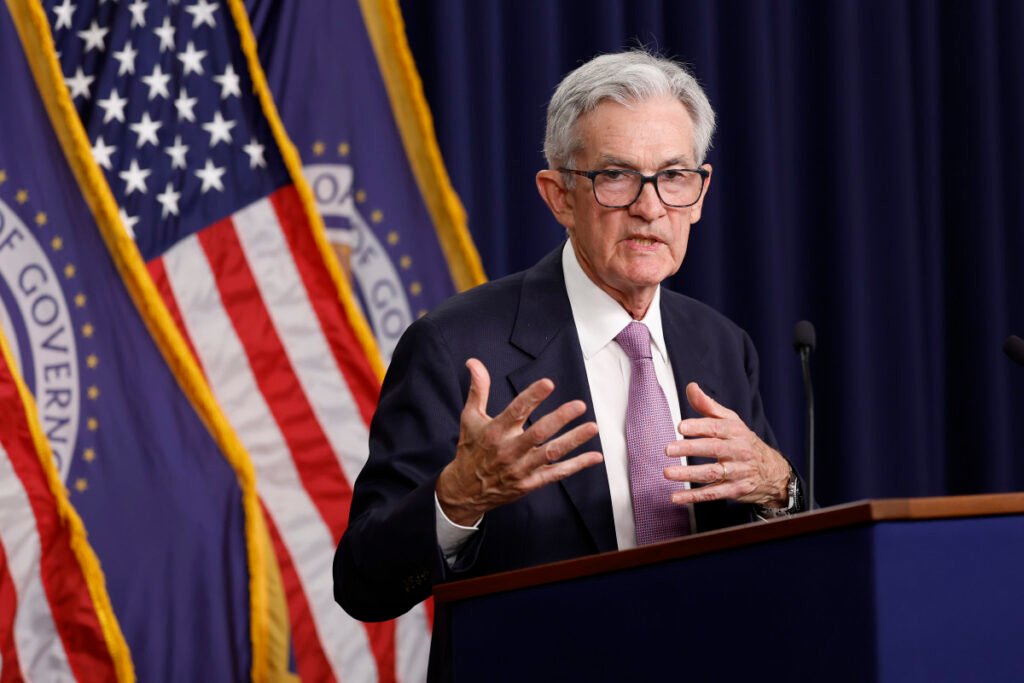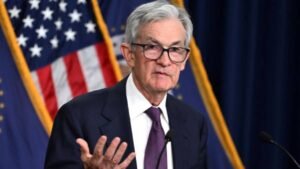American households and investors cheered the latest Consumer Price Index (CPI) report showing tame inflation that could move the Federal Reserve to cut interest rates in September.
Economists, not so much.
💵💰Don’t miss the move: Subscribe to TheStreet’s free daily newsletter💰💵
Some cautioned that tariff-driven inflation may yet emerge more forcefully in coming months from the nation’s supply chain as businesses run down inventories and pass on costs to consumers.
The big question about the July CPI report
Fresh inflation data released Aug. 12 reassured investors, who have feared that President Donald Trump’s broad tariff policies could spike prices in the U.S. economy.
The Consumer Price Index rose 2.7% on an annualized basis in July, while a Dow Jones estimate had called for a 2.8% rise.
But core CPI, which strips out volatile food and energy prices, increased by 3.1% year on year – slightly more than the expected 3%.
Market expectations for lower rates soared following the report.
Traders are now pricing in a nearly 91% chance of a rate cut next month, according to the widely watched CME Group FedWatch Tool.
Traders also increased their bets on rate cuts in October and December, according to the FedWatch Tool.
President Trump applauded the CPI numbers.
He has been demanding the Fed reverse its “wait-and-see” position this year on interest rates. The president has been heavily critical of Fed Chair Jerome Powell as the Fed has maintained a hold position on rates.
“Jerome ‘Too Late’ Powell must NOW lower the rate,” Trump wrote on his TruthSocial platform on Aug. 12.
Some FOMC members urge caution regarding rate cut
Federal Reserve Bank of Kansas City President Jeff Schmid said he favors keeping interest rates on hold for the time being to prevent robust economic activity from adding to inflation pressures.
“With the economy still showing momentum, growing business optimism, and inflation still stuck above our objective, retaining a modestly restrictive monetary policy stance remains appropriate for the time being,” Schmid said Aug. 12 in prepared remarks.
Related: White House expands search to replace Fed Chair Powell
Schmid is one of the 12 members of the Federal Open Market Committee, which sets benchmark interest rates. He added that he’s ready to change his views if demand growth starts “weakening significantly.”
Federal Reserve Bank of Richmond President Tom Barkin said uncertainty over the direction of the U.S. economy is decreasing, but it’s still unclear whether the independent central bank should concentrate more on controlling inflation or bolstering the job market.
“The fog is lifting,” he said.
He pointed to enacted tax legislation, tariff deals, and rebounding consumer and business sentiment.
But risks remain, he told Bloomberg.
“We may well see pressure on inflation, and we may also see pressure on unemployment, but the balance between the two is still unclear,” Barkin said. “As the visibility continues to improve, we are well positioned to adjust our policy stance as needed.”
Fed must weigh inflation, jobs data
The Federal Reserve votes on interest rates Sept. 17.
Its dual mandate from Congress requires monetary policy that provides maximum employment and stable prices from low inflation.
That gets tricky when inflation and jobs data appear to be headed in opposite directions, as recent data seems to indicate.
Lower interest rates decrease unemployment but increase inflation, while higher interest rates lower inflation but increase job losses.
The Fed has set the annual target rate of inflation at 2%.
Related: Key July inflation report could skew future Fed interest rate cuts
The Federal Funds Rate is the tool the Fed uses to set the cost of short-term borrowing like credit cards, auto loans, home equity loans, and student loans.
When the Fed raises rates, yields on short-term securities typically climb and push up longer-term yields like the 10-year Treasury Bond.
Investors demand higher returns to offset anticipated inflation and tighter credit conditions.
The 10-year Treasury yield is a benchmark for U.S. mortgage rates because lenders use it to price long-term loans.
New jobs report data for July, plus revised figures for June and May, show an unexpected cooling in the labor market.
The September FOMC meeting will also have August CPI and jobs data to consider.
“It looks like a bit of Goldilocks right now for the stock market,” said Tom Hainlin, national investment strategist at U.S. Bank Asset Management Group.
Fed and interest rate: to cut or not to cut?
Elyse Ausenbaugh of J.P. Morgan Wealth Management said the softness in the July jobs report should be enough to sway FOMC members to resume cuts in the meetings ahead.
“Overall, it seems fair to say that the Fed could be considering a move in September, but I don’t think a cut at that meeting is as much of a given as market pricing is implying,’’ Ausenbaugh said. “We will get plenty of data between now and then that could give the Fed pause one more time before taking action in the fourth quarter.”
Barry Knapp of Ironsides Macroeconomics expressed a more hawkish view.
He forecast a .50 percentage-point rate cut in September followed by .25 cuts in November in December.
The last FOMC rate cut was in December 2024.
Related: Jobs report shocker resets Fed interest rate cut bets



















